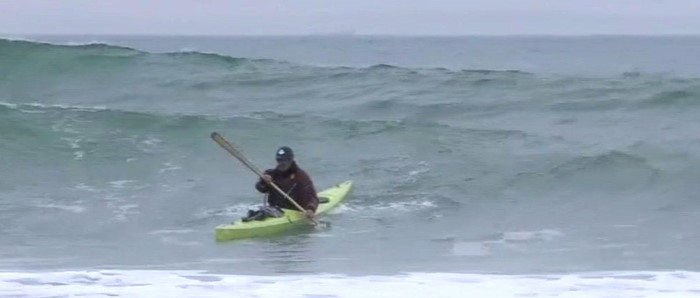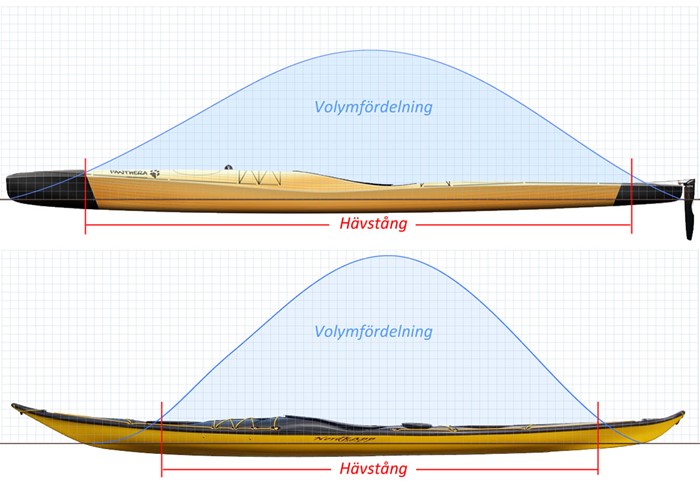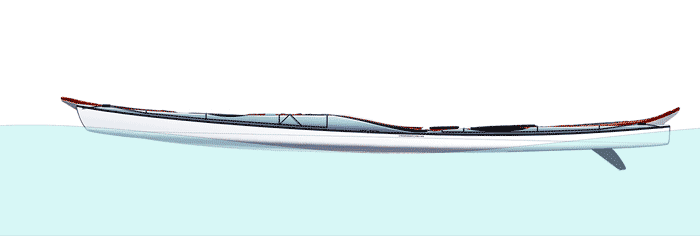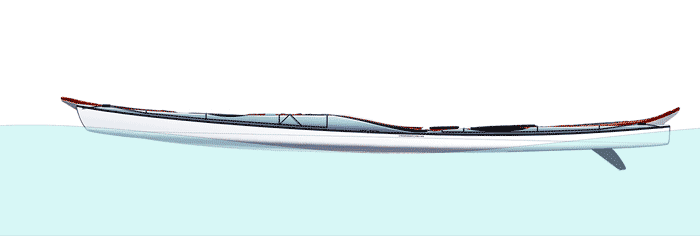Hull types in waves
Friday, December 8, 2017 (hull, Waves), 15 comments

Several times the last years I have had discussions with the people from the companies I am working with about different hull shapes and how they perform in waves. One common question is why I often suggest long waterlines and vertical stems on my designs when most sea kayaks have raked and upturned stems – sometimes delivered with the discreetly suggested notion that "that is what real sea kayaks look like".
Usually I try to explain that stems alone do not dictate the behavior of the kayak in different conditions – you have to look at the rocker, volume distribution, lateral balance, length/width ratio etc – and that it is hard for customers in certain segments of the market to accept that things have changed since British Greenland epigones some fifty years ago established the concept "Sea Kayak".
Some years ago, when I built my first Black Pearl I thought that the Greenland style kayaks had an advantage of moving smoothly and silently in waves, and that the surfski style hull was faster but noisier and wetter – which seemed logical since the Greenland hunters were more concerned with being able to silently sneak up on their prey than with speed, and that surfskis, built for speed, could be forgiven a few bad manners on the wind.
But in the last years, I have again and again seen surfski style hulls going against short seas efficiently and with moderate pitching (very convincingly experienced with my Njord) – and accompanying kayaks with long overhangs hobby-horsing wildly and splashing down into the waves.
When analyzing the mechanics of a wave passage it became quite logical.
Something like this:
In the image below I have a Valley Nordkapp representing the old style classic sea kayak, with looks and reputation promising excellent behavior at sea, and my Panthera representing a modern surfski inspired hybrid kayak. The dimensions are similar (Nordkapp 545x53 cm, Panthera 559x52), as are the volumes (Nordkapp 380 liter, Panthera 375), but most other data are fundamentally different. Panthera has a Cp of 0.563, Nordkapp lower (I have not found the exact number, but guessing from the volume curve it should be approx 0.52). The LWL is 467 cm for Nordkapp and 552 for Panthera.
The blue curve is the volume distribution below the waterline, Panthera with more volume out in the extreme ends and less in the middle, Nordkapp with slim ends and a fat belly (Kretschmer might have said pyknic had he been into kayaks ;-). The red lines show the efficient lever, the length of which determines the pitching amplitude (the length as determined as the point where the volume curve reached a predefined volume, the same for both hulls).

When a wave hits the stem it is the lever that triggers the pitching. A 50 cm wave lifts first the fore and then the aft point of the lever 50 cm. Every part of the kayak beyond the lever will pitch more – and more excessive the longer the overhangs. And more amplitude means more splashing and slowing down.
The animation below is from my page about hull shapes (in Swedish only) and is an attempt to show what happens (on some application you might need to hover over the image to run the animation). The kayaks here are my Frej in the foreground and behind it an Anas Acuta.


Nordkapp (and to a certain extent also Anas Acuta) is an exceptional sea kayak, proven on spectacular expeditions across the North Sea and around Cape Horn and Australia – provided you don't push it. Panthera and Frej are also very good sea kayaks but they may get you there less tired, in style and comfort and in a shorter time.

